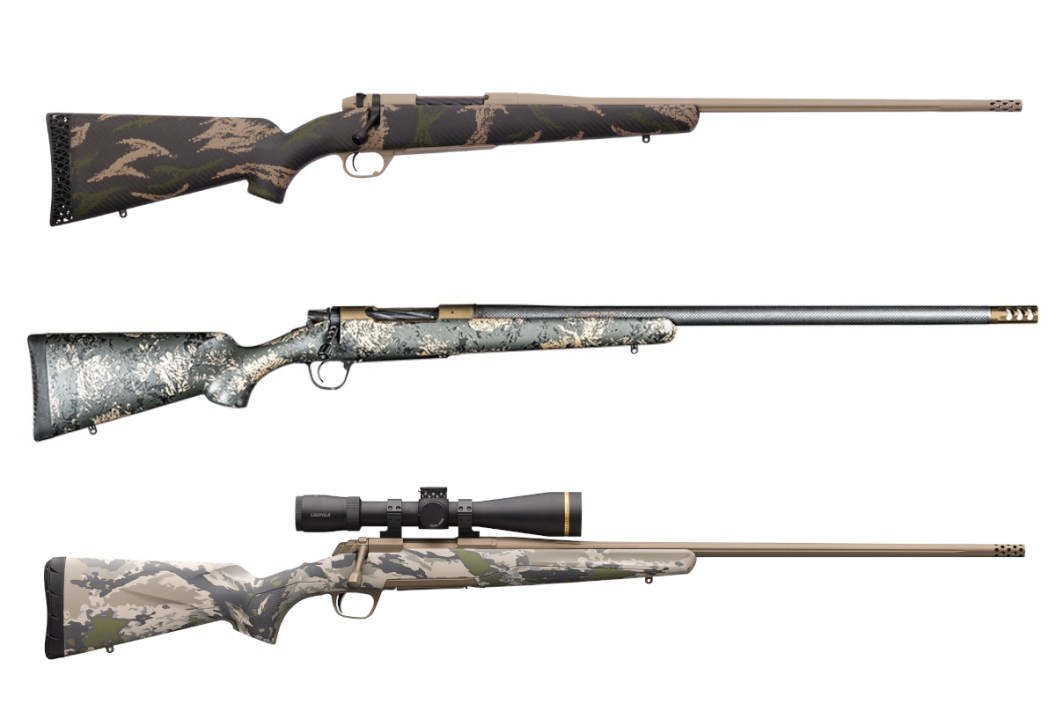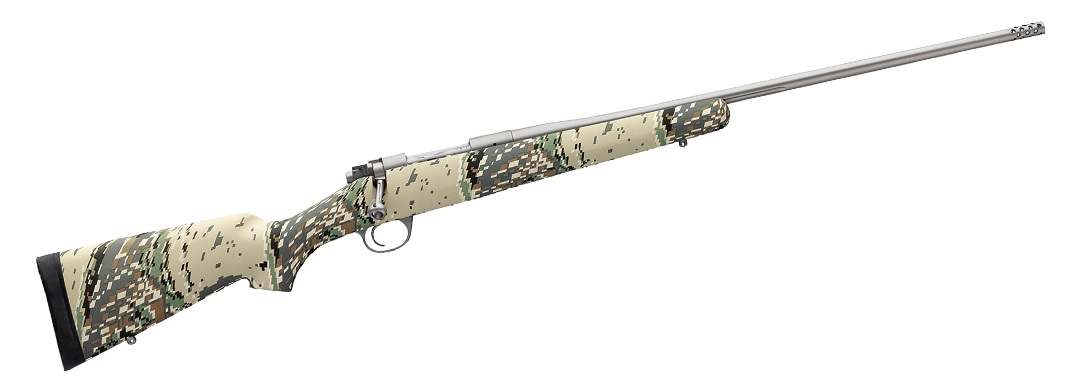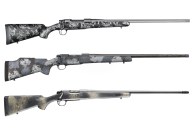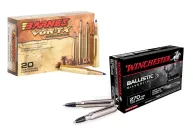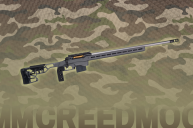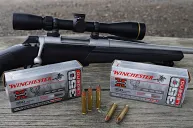The .280 Ackley Improved is an old cartridge that seems to be gathering modern steam.
Sometimes things take a while to catch on, or at least that seems to be the case sometimes in the world of big game hunting. Because there's a ton of different hunting rifle cartridges out there that simply didn't get a whole lot of love when they were first developed. This despite these rounds being extremely accurate and reliable from the get-go.
This was the case with the .280 Ackley Improved. Developed back in the 1960s, this Wildcat round offers a better muzzle velocity than the 280 Remington with heavier bullets and offers a mild recoil that can be handled by most shooters.
Yet for some reason, this interesting round made it all the way until 2007 when ammunition manufacturer Nosler finally registered it with SAAMI. Since then, the popularity of the .280 Ackley Improved has seemingly blown up overnight with more manufacturers than ever producing ammo and chambering new rifles for it. Today we'll have a look at this interesting cartridge and examine some of the latest rifles on the market being chambered for this versatile hunting round.
280 Ackley Improved: the history of the round.
As we mentioned, this Wildcat cartridge was first developed back in the 1960s by noted gunsmith and author P.O. Ackley. The .280 Remington had been introduced around 1957. It was Remington's attempt to compete with the iconic .270 Winchester, and it's safe to say that Remington had a hard time marketing it in those early years. In fact, they tried to rebrand it to the 7mm-06 Remington at one point in the late 1970s. This led to a lot of confusion and is possibly another thing that helped keep the Ackley improved cartridge somewhat obscure until recently, but we digress.
In any case, Ackley started tinkering with the .280 Remington and he ended up necking down the original .30-06 Springfield case significantly. He gave the case a dramatic and quite distinctive 40-degree shoulder angle. Ackley also realized the body taper of the 280 Remington was probably unnecessary, so he reduced it. This improved the case capacity slightly and helped the 280 A.I. attain speeds roughly 100 fps faster than the 280 Remington.
Because it packs in a little more powder, and the because the distinctive case has a slightly better design, the .280 Ackley is usually more efficient than the 280 Remington in almost every aspect. However, one of the main reasons it's getting popular today is the performance with heavier bullets, which we'll get into next.
Ballistics of the 280 Ackley Improved
If you start looking at the ballistics of the 280 A.I., you'll find it's extremely comparable to 7mm Remington Magnum. The plus side is that the design of this cartridge allows you nearly the same benefits in terms of speeds and energy, but while also offering less recoil than the 7mm Rem Mag. That's probably one of the biggest reasons more shooters are making the switch over these days. The other reason is just because of versatility. As you'll see, the 280 Ackley has the speed and power for everything from whitetails and mule deer, all the way up to a bull moose. Why buy a bunch of rifles in different calibers when you can buy one and hunt all the most popular North American big game?
We'll look at Nosler's factory loads first since they are the ones who finally standardized the specifications on this round. Their 140-grain AccuBond Trophy Grade ammo has a muzzle velocity of about 3,200 fps. At 100 yards, it's still doing 2,991 fps and is hitting with about 2,781-foot pounds of energy. Those are some great numbers, but most shooters step it up to heavier grain bullet weights because that's where the 280 A.I. shines. The 160-grain version of the same Spitzer AccuBond ammo is doing 2,950 fps at the muzzle and 2,770 fps at 100 yards, delivering about 2,725 foot pounds of energy with zero drop.
Nosler's 140-grain Spitzer Ballistic Tip bullets are also speedsters, doing about 3,200 fps at the muzzle and 2,991 fps at 100 yards. Even at 500 yards, these rounds are still doing 2,245 fps. Their 150-grain AccuBond Long Range premium brass rounds do about 2,930 fps at the muzzle, 2,757 fps at 100 yards while delivering 2,532-foot pounds of energy to the target.
Looking at other ammo manufacturers, Hornady's 162-grain ELD-X Precision Hunter series is doing speeds of 2,850 fps at the muzzle, 2,704 fps at 100 yards delivering about 2,629-foot pounds of energy. Federal Premium makes a 168-grain Berger Hybrid factory load that does 2,800 fps at the muzzle and 2,639 fps at 100 yards.
There's a lot to love with the factory ammo options for the 280 Ackley, however it's also popular with reloading enthusiasts. As is often the case, many have been able to squeeze some extra speed out of hot handloads.
You may be wondering if there are any downsides to the 280 Ackley Improved after hearing all these numbers and praise. There are a couple. First, the premium factory ammo is expensive. It can also be a little bit harder to find than some comparable calibers. The second downside is that some people have experienced feeding issues with this round. Some people attribute this to that unusual 40-degree shoulder. You'll find mixed opinions on this online. Some people report they have had major feeding issues while others report they've never had a problem. Make of that what you will. Now, let's look at some of the rifles on the market for this round today.
Nosler Model 48 Mountain Carbon
Coming in at just six pounds thanks to the carbon fiber synthetic stock, this bolt-action pairs perfectly with Nosler's premium grade ammo for a rugged backcountry hunting tool. In fact, they guarantee sub moa groups when using their ammo. The Model 48 has a free-floating 24-inch carbon-fiber wrapped barrel that is also threaded for a suppressor straight from the factory. The action and bottom metal have a Cerakote tungsten grey finish to help protect from the elements.
Weatherby Mark V Backcountry 2.0
If you're getting a rifle to handle any big game hunting scenario in North America, the Mark V is a solid choice. This rifle has a 24-inch fluted barrel with a 1:9 twist rate that's going to be perfect for those heavier bullets. The barrel, trigger guard and receiver are all coated with a McMillan tan Cerakote finish. The Weatherby has an extremely short 54-degree bolt throw for fast cycling. Through advancements in manufacturing and stock technology, Weatherby got the weight down to an incredible 5.4 pounds, making this rifle a joy to carry up a steep mountain slope in search of that big buck or bull.
Kimber Mountain Ascent
Another remarkably light weight option for those who need to do a lot of trekking up and down the mountains, the Kimber comes in at just five pounds, six ounces. It features a 24-inch barrel length with a 1:9 twist rate. It comes with a muzzle brake straight from the factory. The barrel is made of stainless steel and is also fluted to further reduce the weight. The stock is made from a reinforced carbon fiber and features a Gore Optifade pattern. The rifle cycles with a Mauser claw extractor and has a Model-70 type wing safety with three positions. Kimber also gave these rifles a trigger that can be adjusted between 3.5 and four pounds.
Savage Arms 110 Timberline
This rifle has specifically been designed by Savage Arms for the rigors of the backcountry. It's a little bit heavier than some of the other options on this list, but that's going to help with the accuracy of the gun. The Savage features a 22-inch carbon steel and fluted barrel with a 1:8 twist rate. They also gave the barrel and receiver an O.D. Green Cerakote finish to protect from rain and snow. The barrel is also threaded with an omni-port muzzlebrake. Savage also included their signature AccuTrigger and AccuFit systems that allow you to adjust everything from the trigger pull to the comb height and length of pull without visiting an expensive gunsmith.
Christensen Arms Ridgeline FFT
This is one of the newest additions to the Christensen Arms lineup. They introduced their new "flash forged technology" (FFT) at SHOT Show. Basically, it allows them to build a stronger, lighter stock using materials that are more environmentally sustainable. It comes in at just 5.3 pounds. The 280 Ackley Improved version features a 22-inch 416R stainless steel barrel with a 1:9 twist rate. It's carbon fiber wrapped and features a stainless steel side baffle brake. Christensen Arms offers this rifle with either a natural stainless or burnt bronze Cerakote finish depending on your needs and tastes.
Browning X-Bolt Speed
One of the newest offerings to the Browning X-Bolt line, this rifle is built for backountry hunting. It weighs six pounds, 13 ounces and features a smoked bronze Cerakote finish on the barrel and receiver. The 24-inch fluted barrel has a 1:8 twist rate and a radial muzzle brake. The composite stock feature a Ovix camo pattern. Textured grip panels and an Invlex recoil pad give some additional ergonomics to the design.
For more outdoor content from Travis Smola, be sure to follow him on Twitter and check out his Geocaching and Outdoors with Travis YouTube channels.
NEXT: 260 REMINGTON: HUNTING RIFLES FOR THE UNDERRATED .308 ALTERNATIVE
WATCH
